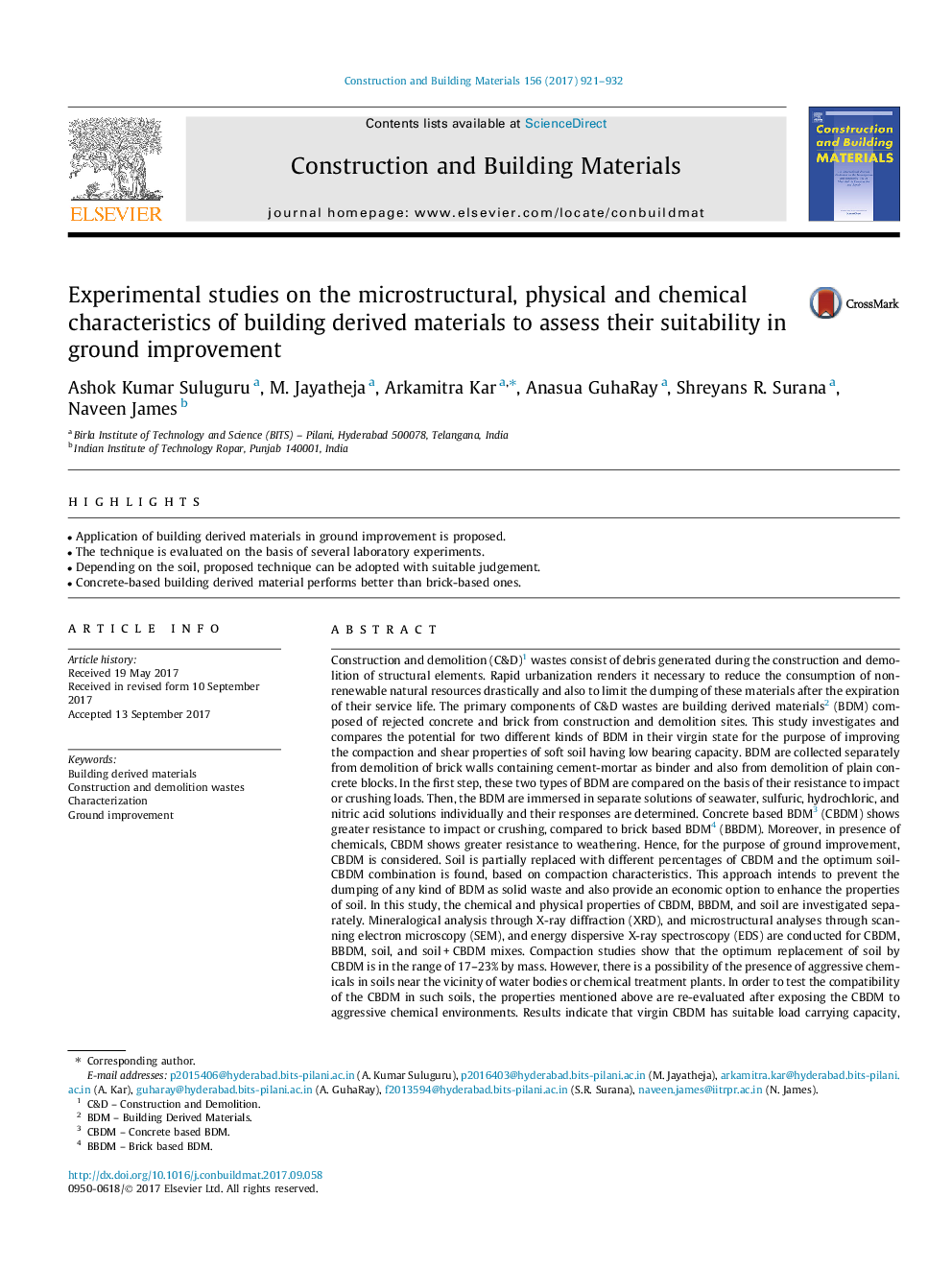| کد مقاله | کد نشریه | سال انتشار | مقاله انگلیسی | نسخه تمام متن |
|---|---|---|---|---|
| 4912720 | 1428750 | 2017 | 12 صفحه PDF | دانلود رایگان |
عنوان انگلیسی مقاله ISI
Experimental studies on the microstructural, physical and chemical characteristics of building derived materials to assess their suitability in ground improvement
ترجمه فارسی عنوان
مطالعات تجربی بر روی ویژگی های ریز ساختاری، فیزیکی و شیمیایی مواد ساختمان ساخت یافته برای ارزیابی مناسب بودن آنها در بهبود زمین
دانلود مقاله + سفارش ترجمه
دانلود مقاله ISI انگلیسی
رایگان برای ایرانیان
کلمات کلیدی
ساختمان مواد مشتق شده، زباله های ساخت و ساز و تخریب، تعیین مشخصات، بهبود زمین،
موضوعات مرتبط
مهندسی و علوم پایه
سایر رشته های مهندسی
مهندسی عمران و سازه
چکیده انگلیسی
Construction and demolition (C&D)1 wastes consist of debris generated during the construction and demolition of structural elements. Rapid urbanization renders it necessary to reduce the consumption of non-renewable natural resources drastically and also to limit the dumping of these materials after the expiration of their service life. The primary components of C&D wastes are building derived materials2 (BDM) composed of rejected concrete and brick from construction and demolition sites. This study investigates and compares the potential for two different kinds of BDM in their virgin state for the purpose of improving the compaction and shear properties of soft soil having low bearing capacity. BDM are collected separately from demolition of brick walls containing cement-mortar as binder and also from demolition of plain concrete blocks. In the first step, these two types of BDM are compared on the basis of their resistance to impact or crushing loads. Then, the BDM are immersed in separate solutions of seawater, sulfuric, hydrochloric, and nitric acid solutions individually and their responses are determined. Concrete based BDM3 (CBDM) shows greater resistance to impact or crushing, compared to brick based BDM4 (BBDM). Moreover, in presence of chemicals, CBDM shows greater resistance to weathering. Hence, for the purpose of ground improvement, CBDM is considered. Soil is partially replaced with different percentages of CBDM and the optimum soil-CBDM combination is found, based on compaction characteristics. This approach intends to prevent the dumping of any kind of BDM as solid waste and also provide an economic option to enhance the properties of soil. In this study, the chemical and physical properties of CBDM, BBDM, and soil are investigated separately. Mineralogical analysis through X-ray diffraction (XRD), and microstructural analyses through scanning electron microscopy (SEM), and energy dispersive X-ray spectroscopy (EDS) are conducted for CBDM, BBDM, soil, and soil + CBDM mixes. Compaction studies show that the optimum replacement of soil by CBDM is in the range of 17-23% by mass. However, there is a possibility of the presence of aggressive chemicals in soils near the vicinity of water bodies or chemical treatment plants. In order to test the compatibility of the CBDM in such soils, the properties mentioned above are re-evaluated after exposing the CBDM to aggressive chemical environments. Results indicate that virgin CBDM has suitable load carrying capacity, but this capacity decreases after exposure to chemicals. This is associated with change in physical and chemical characteristics of the CBDM, as assessed through XRD, stereomicroscopic imaging, and determination of change in weight. Although the overall performance of CBDM is better than that of BBDM, proper judgement is necessary for their practical application of any kind of BDM for ground improvement depending on location or site conditions.
ناشر
Database: Elsevier - ScienceDirect (ساینس دایرکت)
Journal: Construction and Building Materials - Volume 156, 15 December 2017, Pages 921-932
Journal: Construction and Building Materials - Volume 156, 15 December 2017, Pages 921-932
نویسندگان
Ashok Kumar Suluguru, M. Jayatheja, Arkamitra Kar, Anasua GuhaRay, Shreyans R. Surana, Naveen James,
